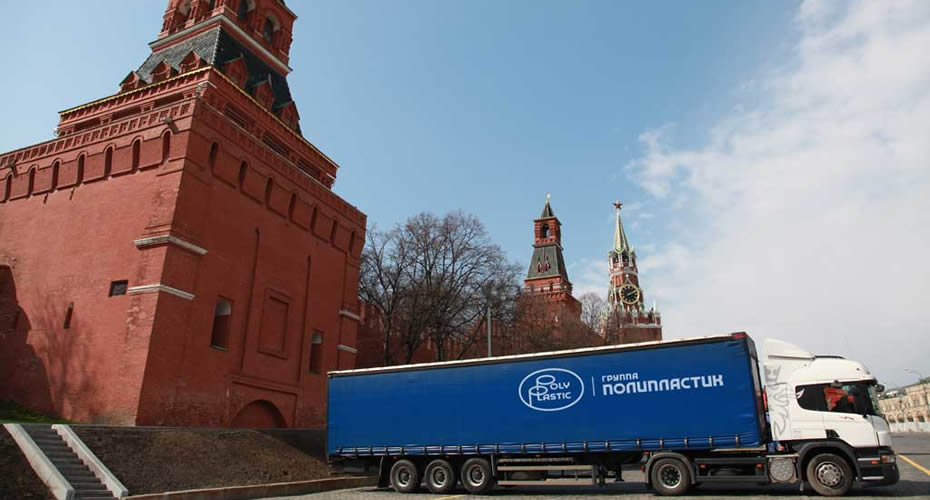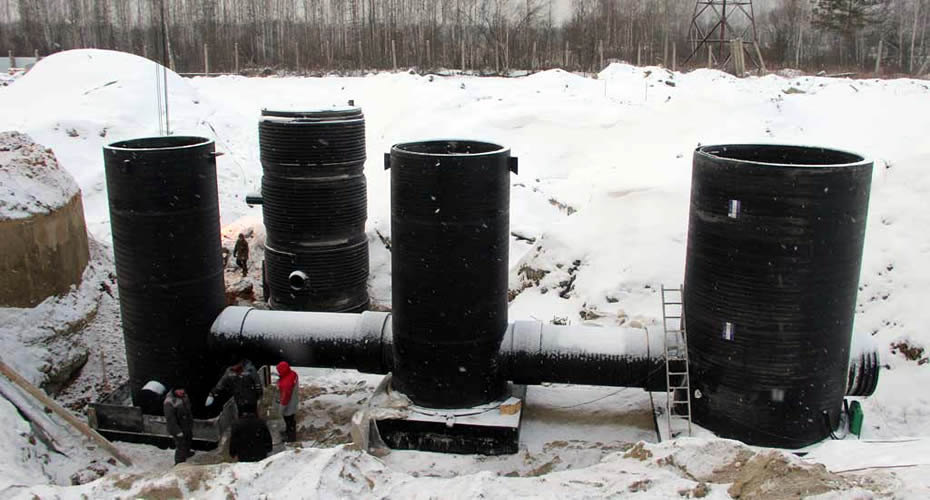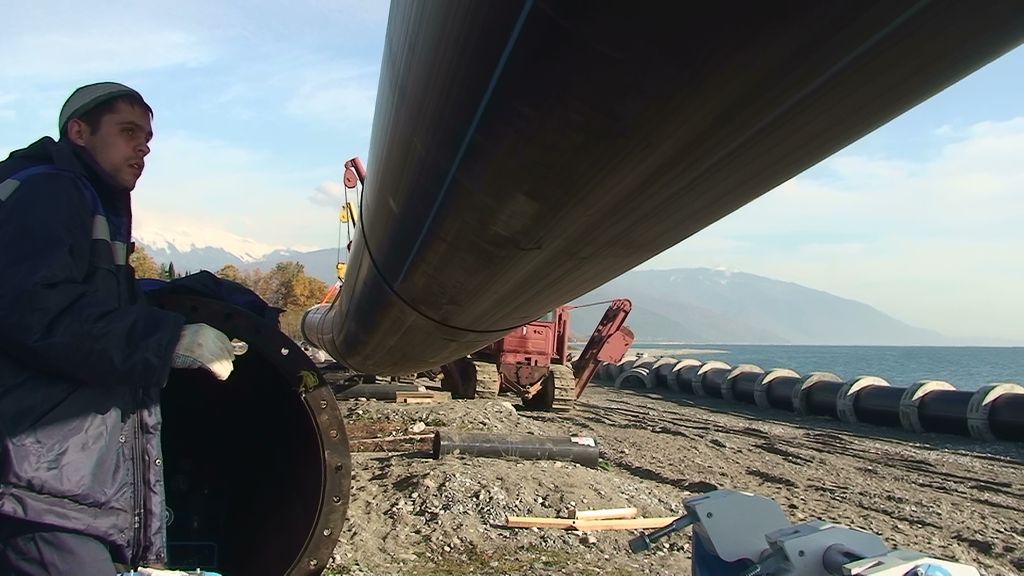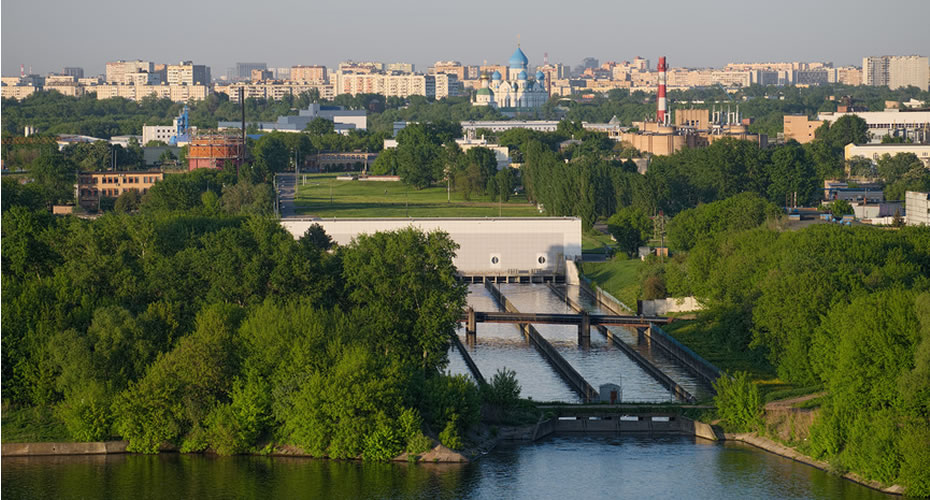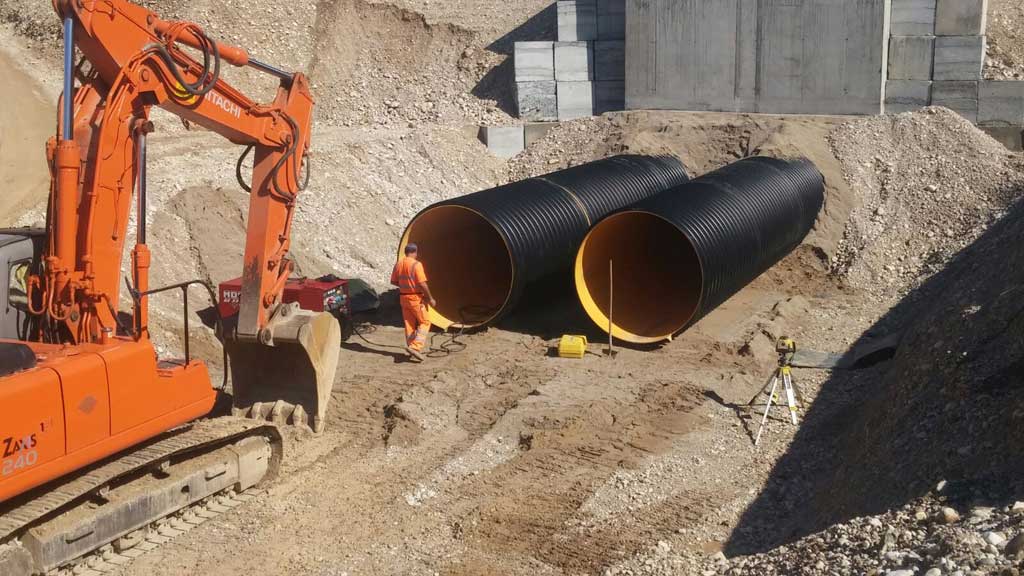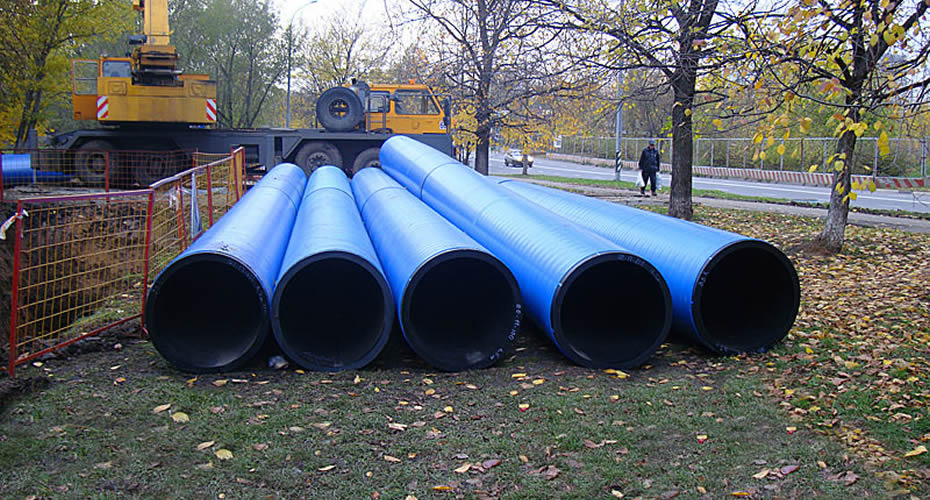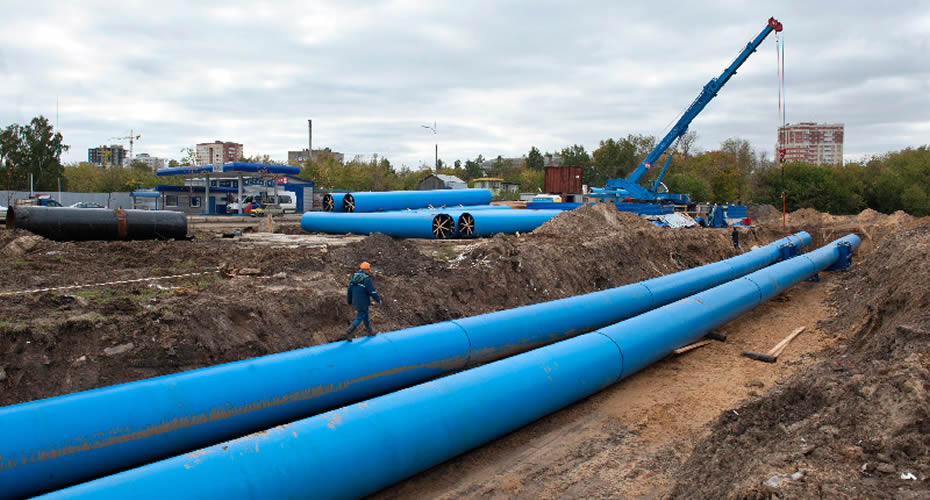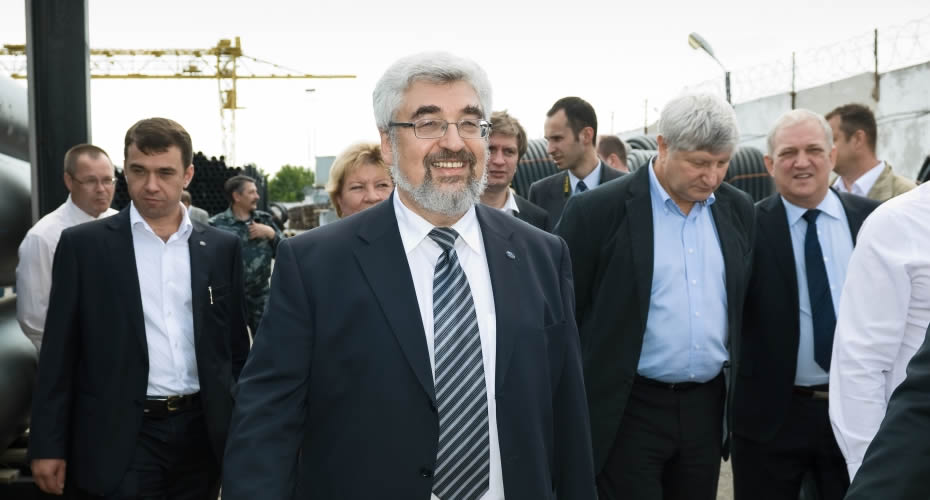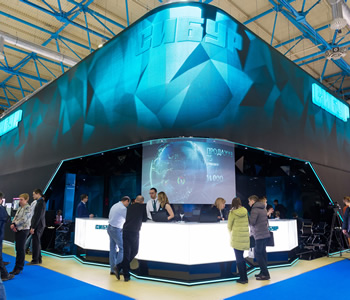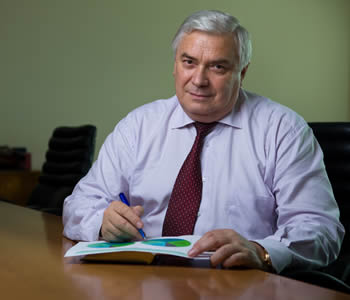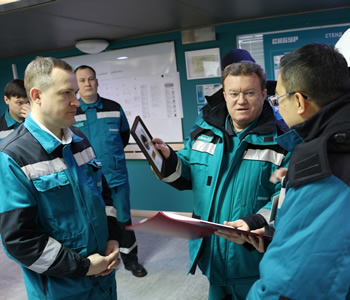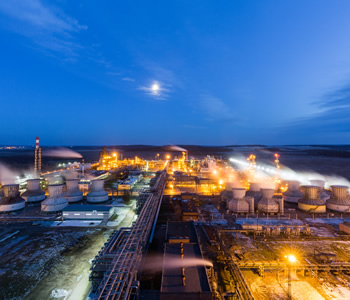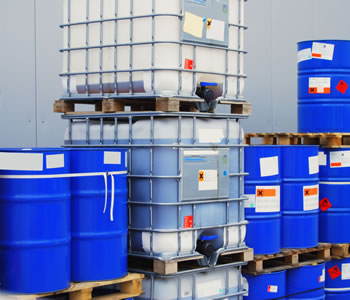What did 2016 bring for the plastic pipe market?
Many challenges. Thankfully though, it did a little better compared to the huge fall of the previous years. Over the last three years, the market shrank by as much as a third – fr om 380 to 250 kt. With an estimated 3–4% contraction in 2016, we hope we have seen the worst of it. It is enough that Russia’s per capita consumption of polyethylene pipes is three to four times lower compared not only to Europe and the USA, but even to China, although the latter has a much larger population. Lagging behind in volumes like that is downright embarrassing.
What caused the contraction?
All parts of the economy are interrelated. For example, the health of the pipe market is contingent upon new industrial facilities put on stream and an active housing construction. Unfortunately, Russia has seen a significant decline in investor activity of late. In addition, the downturn caused a drop-off in funding for pipe renovation – what limited budget regional authorities have goes to social spending. More often than not, such renovation is put on the back burner, and pipes get minor repairs at best. This explains a major decrease in demand.
Can it be the case of deferred demand that will materialise in future?
For repairs, it surely is. Each year, around 4% of utility networks fail due to wear and tear. Before the downturn, the annual rate of pipe renovation was 2%, while now it has fallen below 1%. If not addressed in the near future, this problem will grow into a catastrophe, and the authorities will have to pay through the nose to quickly fix the collapsed networks. This mainly concerns water supply and sewage systems, as the situation with gas and heating is more or less balanced. .
We won a tender to provide pipes for ZapSibNeftekhim’s water supply system, which was a real game changer not only for us, but for the whole domestic pipe market. Were it not for this contract, last year it could have shrunk by 7% instead of 3–4%.
This was about the market, and what was the year like for your company?
We bucked the trend, having achieved production growth of around 3% as at the year-end. This was largely due to our contract with SIBUR. We won a tender to provide pipes for ZapSibNeftekhim’s water supply system, which was a real game changer not only for us, but for the whole domestic pipe market. Were it not for this contract, last year it could have shrunk by 7% instead of 3–4%.
What are the forecasts for 2017?
Speaking of the market, I hope it has bottomed out. As for our own targets, we aim to deliver 5–7% growth. Though still below the pre-crisis level, this will nonetheless be a huge step forward. And we plan to achieve this growth by focusing on a more advanced product range, in particular, by increasing the share of multilayer and special-purpose pipes in our order portfolio.
Is it what your strategy will be built on going forward?
Right now, our customers mostly order common black rigid pipes for water and gas supply. However, the margin we get is negligible due to a very tough and often unfair competition in this segment. Some producers do not use special pipe materials, thus keeping the price down at the expense of product quality. Others evade taxes by paying wages off the books, which gives them an edge. Here we are fighting an uphill battle as we value transparency – all our payments are officially recorded, materials are of high quality, etc.
This is why we rely on complex products to become our growth driver. One example would be multilayer pipes of our MULTI line. Their external layer is intended for identification and marking, and the inner layers may be different depending on the purpose. For instance, there are reinforced pipes for mining and processing plants and the oil industry that can withstand high pressure and have barrier layers to prevent permeation of hydrocarbons.
Another promising product is structured-wall pipes. We have pipes with an inside diameter of up to 3 m, which are used to build extensive stormwater sewer systems.
I need to mention here that our customers normally order the entire pipe systems, which, apart from pipes, include various accessories like fittings, wells, shut-off valves. In a broader sense, this also takes into account welder and design engineer training, as well as equipment sales and lease.
Are your wells plastic, too?
We rely on complex products to become our growth driver. One example would be multilayer pipes of our MULTI line. For instance, there are reinforced pipes for oil industry that can withstand high pressure and have barrier layers to prevent permeation of hydrocarbons.
There is no point in replacing the pipes if the wells leak. And a concrete well would start leaking in the third year, at best, or, if you are not lucky, immediately after its installation. This will cause financial losses and environmental damage.
However, plastic pipes are much more popular today than plastic wells. One of the key reasons is that plastic wells are supplied ready for use, which means they need to be perfectly designed, fully factory-made and transported with care. Conversely, concrete wells are easier to handle as they are assembled on-site from concrete rings. But we are trying to turn the tide here, having launched modular well systems. They consist of several units: the bottom part (the so-called tray), the body (a two-layer corrugated pipe cut on-site to the required length), and the top part (the cone and the lid). Also, there may be up to 100 configurations of the bottom part.
Another important issue about plastic wells is their price – they are more expensive than their concrete counterparts. Here again, launching modular wells helped us halve the cost. Moreover, they will be in demand wh ere there is a need for a truly closed water recycling system – for instance, at industrial facilities. We have already supplied both plastic pipes and wells to SIBUR’s Tobolsk site. Its chemically protected sewage system is absolutely leak-free, and will last ages – in 50 years, it will function as smoothly as it does today. With this system, SIBUR sets an example of efficiently using cutting-edge materials.
What other projects involving your products are worth mentioning?
They are just too many.
What if we narrow them down to the last few years?
Then I would say it is Sochi. Before the Olympics, there were drainage works in the Imereti Lowlands chosen as the location for the main Olympic facilities. As part of the project, we supplied our metal reinforced KORSIS ARM polyethylene pipes 2.5 m in diameter. In total, the project required over 5 km of these pipes. There is also a number of interesting projects in Moscow, including the Kuryanovskiye treatment facilities, which use our three-meter KORSIS PLUS spiral winding pipes. I think it is the first Russian project that has utilised large inside diameter pipes on this scale. Overall, Moscow is a special market, which requires big volumes, as well as good product quality and properties.
How is your partnership with SIBUR going?
I would say our relationship is growing stronger. We are looking forward to the launch of ZapSibNeftekhim, which will be producing pipe grade polyethylene on a large scale to make up for the current domestic shortage. Given the annual consumption of over 200 kt, the prospects indeed look very exciting. And this will make the market healthier, as well: with sufficient supply of feedstock, it will increasingly move away from counterfeit products. So yes, we are very optimistic about this project and cannot wait for it to be completed.
You have said that you are SIBUR's supplier, as well as a potential major customer. What other areas of cooperation do you anticipate?
This is all a two-way street. Right now, we do not get any substantial supplies from SIBUR, but we do collaborate on joint research programmes with the NIOST [SIBUR's R&D centre. – Editor’s note.], and participate in developing new grades.
Is the domestic market a priority for you, or are you also considering export opportunities?
We do not export much to non-CIS countries due to delivery challenges. Customs duties (6.5%) and logistics (around EUR 100–150 per tonne) increase the actual pipe cost, making their sale a difficult task. This is why we prefer to export technology rather than products.
Right now, our customers mostly order common black rigid pipes for water and gas supply. However, the margin we get is negligible due to a very tough and often unfair competition in this segment. Some producers do not use special pipe materials, thus keeping the price down at the expense of product quality.
How do you mean?
We have a joint venture in Austria which takes advantage of our know-how to produce pipes for heat supply networks. In May, a new plant will open in China that will also produce heat supply pipes using our innovative technology.
Exports become profitable when the feedstock is cheap. Right now, it accounts for around 70% of the production cost, which is a lot. The tide may change, however, if the domestic supply of pipe grade polyethylene becomes sufficient and affordable. Even so, I doubt we will see explosive growth akin to that in China, when plastic pipe production surged from 4 to 13 mt between 2007 and 2013.
There are few companies in Russia that develop and sell their own products and solutions, and POLYPLASTIC is one of them. What is your secret?
Our history goes back to the turbulent 90s. Much like everyone else, we started with buying and selling. Then we decided to build our own production facilities. We opened our first composite factory in 1993, which was considered borderline crazy by many. At that time inflation was rampant, and loans carried a monthly interest rate of 10%. But with our minds set on this business, we managed to find sufficient funding. In other words, we were very production-oriented from the outset. Many resellers of those days are now gone – easy money seldom lasts. We, on the contrary, were building our own factories, not even taking part in privatisation. And it paid off.
Download PDF

